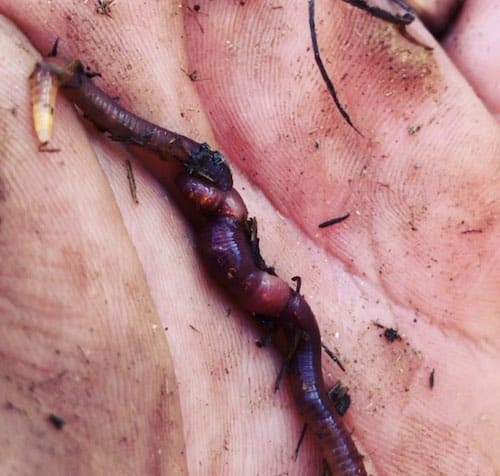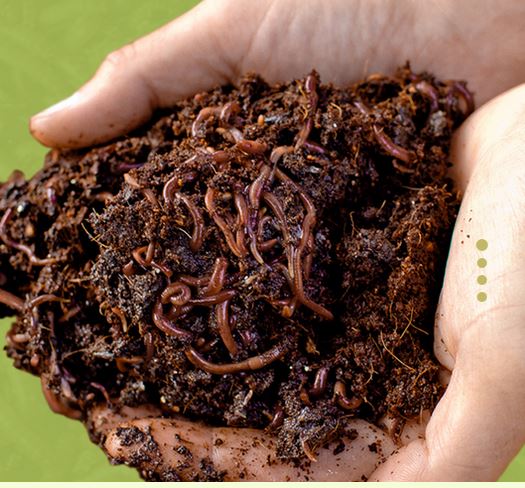The Role of Red Wigglers in Sustainable Horticulture
The combination of red wigglers right into sustainable gardening methods supplies a compelling approach to improving dirt health and reducing organic waste. These organisms not only transform kitchen scraps into nutrient-dense compost with vermicomposting however additionally aerate the soil, advertising ideal conditions for plant growth. As they break down facility organic materials, they proactively promote a growing microbial ecosystem vital for sustainable agriculture. Nevertheless, the ramifications of using red wigglers extend beyond mere composting; their role fit an extra lasting future warrants a much deeper expedition of their benefits and sensible applications.
Understanding Red Wigglers
Red wigglers, scientifically referred to as Eisenia fetida, are a types of earthworm renowned for their role in lasting horticulture and composting methods - red wigglers. These worms flourish in decomposing natural matter, making them specifically effective in transforming kitchen area scraps and yard waste right into nutrient-rich compost. Unlike standard earthworms, red wigglers have a higher tolerance for differing moisture degrees and can grow in atmospheres with abundant organic product
The habitat choices of red wigglers include moist, dark environments abundant in organic web content, such as garden compost bins or worm ranches. Their eco-friendly function extends past composting; they are important in aerating the soil and assisting in nutrient biking, which eventually adds to much healthier garden ecosystems. red wigglers. Recognizing the biology and behavior of red wigglers is essential for those looking for to execute reliable vermicomposting in sustainable horticulture
Benefits of Vermicomposting
Vermicomposting deals various benefits that enhance lasting gardening techniques and contribute to ecological health. Among the primary advantages is the transformation of natural waste right into nutrient-rich compost, which boosts soil structure and fertility. The spreadings produced by red wigglers are loaded with valuable bacteria and essential nutrients, making them an exceptional all-natural fertilizer.
Furthermore, vermicomposting significantly decreases land fill waste. By drawing away kitchen scraps and lawn waste from land fills, this practice not only decreases methane emissions-- a potent greenhouse gas-- however likewise advertises a round economic climate, where waste is repurposed as a source.
An additional benefit is the enhancement of soil aeration and drain (red wigglers). The burrowing activity of red wigglers develops networks in the dirt, allowing air and water to penetrate more quickly, therefore promoting a healthier origin system for plants
In addition, vermicomposting can be done on a tiny range, making it accessible for urban gardeners and those with restricted area. This method encourages environmental stewardship and recognition, as individuals end up being a lot more engaged with their waste administration practices. Eventually, vermicomposting represents a sustainable, efficient, and green strategy to horticulture that profits both plants and the world.
Exactly How to Begin Vermicomposting
Starting your own vermicomposting system can be a rewarding undertaking that boosts your lasting gardening practices. To start, pick an ideal container, such as a plastic container or wooden box, with good water drainage and air flow. The size will certainly rely on the volume of kitchen scraps you create; a container of 10-14 gallons normally is sufficient for a home.
Next, prepare the bed linens material. Shredded paper, cardboard, and coconut coir are exceptional choices, providing a comfy habitat for the red wigglers. Go for a bed linens depth of about 4-6 inches, which must be moist but not soaked.
Once the bed linen is established, present your worms. Red wigglers (Eisenia fetida) are one of the most appropriate for composting. Start with roughly one extra pound of worms for each 2-3 pounds of kitchen area scraps weekly.
Begin adding cooking area waste, avoiding meat, milk, and oily foods, as these can attract parasites and produce smells. On a regular basis keep track of the container's moisture degrees visit this site and temperature level, ensuring it continues to be within the optimal array for worm activity. With these preliminary actions, you'll be well on your way to producing nutrient-rich garden compost for your garden.
Preserving a Healthy And Balanced Worm Bin
A prospering worm container requires constant treatment and focus to maintain an ideal setting for the red wigglers. Key elements to keep an eye on consist of moisture levels, temperature, and food supply. Preserving a dampness degree akin to a wrung-out sponge is important; excessive water can lead to anaerobic conditions, while inadequate can dry out the worms.
Temperature level is likewise essential, as red wigglers grow in a series of 55 to 77 degrees Fahrenheit. Extreme temperature levels can emphasize the worms, possibly leading to death. Putting the bin in a climate-controlled area or using insulating materials can aid manage temperature variations.

Lastly, oygenation is vital. Consistently turning the bed linens and using a fork or shovel can stop compaction and advertise airflow, making sure a healthy, successful setting for the red wigglers. By adhering to these methods, garden enthusiasts can maintain an efficient worm bin that sustains lasting gardening efforts.
Influence on Dirt Health
Enhancing soil health and wellness with the use of red wigglers is a fundamental element of sustainable gardening. By consuming organic matter, red wigglers damage down intricate products right into easier compounds, a process known as vermicomposting.


Verdict
In final thought, red wigglers dramatically add to sustainable gardening via their reliable vermicomposting methods. By promoting waste decrease and cultivating a circular economy, red wigglers arise as necessary elements in environmentally friendly gardening campaigns, highlighting their important duty in ecological sustainability.
Comments on “Vibrant red wigglers: Top reasons to choose them”